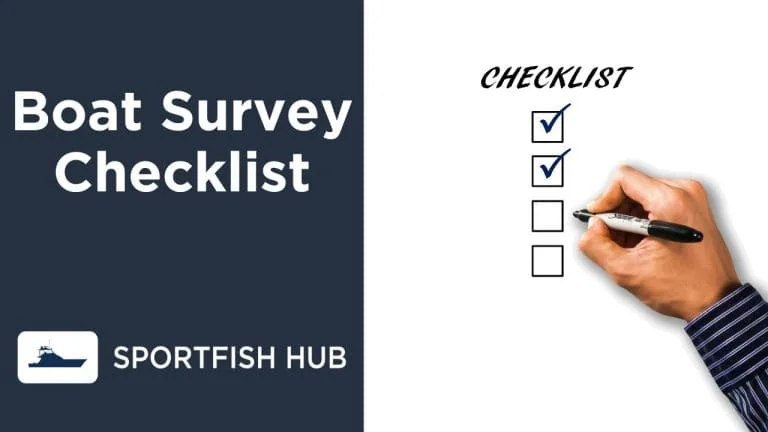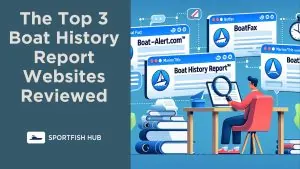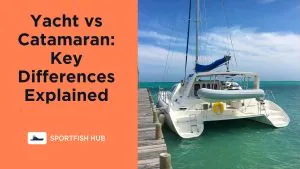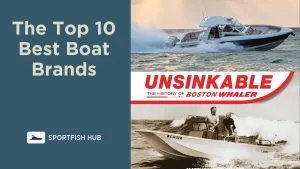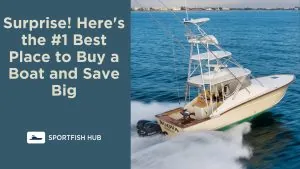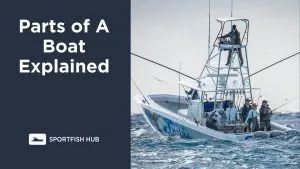Thoroughly inspecting all systems and components of a boat is crucial for identifying issues early and keeping passengers safe. This comprehensive boat inspection checklist goes beyond the basics to cover critical details buyers, owners, and marine surveyors should verify.
Key Takeaways
- Inspect the hull for cracks, blisters, soft spots, and mismatched paint indicating repairs. Tap the hull to listen for voids.
- Check engine components like oil, belts, hoses, filters fuel system, compression. Start and run the engine to check for issues.
- Examine electrical wiring, connections, batteries, switches and bilge pumps for corrosion and damage.
- Operate all plumbing components and check hoses, clamps, pumps and through-hulls for leaks.
- Confirm safety equipment like fire extinguishers, flares, PFDs are USCG approved and in working order.
- For sailboats, inspect sails, standing rigging, mast, boom and lines for wear, corrosion and proper operation.
- Address identified issues promptly to maintain safety and optimal performance.
Exterior Inspection
Hull – Check for cracks, blisters, soft spots, scrapes, distortion, and corrosion. Tap the hull to detect voids. Look for mismatched paint that indicates repairs.
Keel – Verify it runs straight and has no damage or wear.
Deck – Look for cracks, soft spots, leaks, deterioration of hardware attachments.
Helm Station – Ensure steering operates smoothly and gauges work accurately.
Joints – Examine hull-to-deck joints for separation gaps that can allow leaks.
Through-Hull Fittings – Check for leaks at all through-hulls. Make sure they are secure.
Moisture – Look for discoloration or corrosion that indicates water intrusion.
Finish – Check for damaged or faded gelcoat, cracking or peeling paint.
Hardware – Confirm deck hardware like cleats and rails are securely fastened.
Cabin Inspection
Hatches/Ports – Verify all are watertight with no leaks. Make sure latches work properly.
Upholstery – Look for mold, mildew, stains, tears, sagging, or broken hardware underneath.
Bilges – Check for water intrusion, leaks, oil sheen, and odors. Operate bilge pump(s).
Wiring – Look for corrosion, chafed insulation, loose connections, heat damage.
Woodwork – Inspect for softness, rot, cracking, delamination.
Plumbing – Operate all faucets, showers, toilets, pumps. Check hoses, clamps, tanks, and through-hulls for leaks.
Galley – Test stove, fridge, sinks. Make sure appliances are secured.
Ventilation – Verify natural airflow or powered vents work to avoid fumes.
Safety Gear – Confirm easy access and proper storage of flares, fire extinguishers, first aid kit.
Propulsion & Mechanical Systems
Engine – Check oil, fuel filters, belts, hoses, compressor, leaks. Start and run engine, note noises or smoke.
Gauges – Confirm accurate readings for volts, temp, pressure, fuel level, rpm.
Gearcase – Check for cracks, leaks, loose mounts. No excessive play on output shaft.
Propeller – Look for bent, cracked, pitted blades. Make sure it is secured properly.
Steering – Operate throttle and steering through full range. Smooth and easy turns.
Controls – Test gearshift(s), throttle functions. Cables and linkages move freely.
Exhaust – Check for leaks at manifold, riser, and through-hull. No obstructions.
Fuel System – Operate fill, vent, supply lines. Look for leaks, corrosion, debris.
Electrical – Check condition of wiring, connections, batteries, switches, bilge pumps.
AC/DC Power – Inspect charger, invertor, outlets, panels for corrosion and function.
Safety & Required Gear
PFDs – Confirm one wearable USCG approved PFD per passenger. Inspect condition.
Throwable Device – Have at least one USCG approved throwable flotation aid.
Fire Extinguishers – Verify proper type, size, quantity and charge level.
Visual Distress Signals – Have current day and night signals (flares, flag, lights).
Sound Device – Test horn or whistle for audible signal.
Navigation Lights – Plugged in, operable, and properly aligned.
Registration – Have valid registration paperwork on board. Display numbers properly.
Safety Labels – Ensure capacity, emissions, fuel data placards are legible.
Other – Check for paddle, anchor and line, first aid kit, bailing device.
Sailboat Rigging Inspection
Mast/Boom – Check for cracks, corrosion, and proper attachment to the deck.
Standing Rigging – Inspect wire shrouds and stays for wear, broken strands, swaged fittings.
Running Rigging – Check halyards, sheets, control lines for chafe, fraying, and proper operation.
Winches – Confirm smooth operation, no slippage or grinding.
Sails – Look for ripped seams, UV damage, securing hardware, proper reefing.
This expanded and comprehensive boat inspection checklist will help identify issues early so they can be addressed promptly, keeping all passengers safe and the boat performing optimally.
Boat Inspection Checklist
| Area | What to Check |
|---|---|
| Hull | Cracks, blisters, soft spots, tapping for voids |
| Keel | Straight, no damage |
| Deck | Leaks, cracks, soft spots, hardware security |
| Helm Station | Steering, gauges |
| Joints | Hull-to-deck separation |
| Through-Hulls | Leaks, security |
| Moisture | Discoloration, corrosion |
| Finish | Gelcoat, paint condition |
| Hatches | Leaks, latches |
| Upholstery | Mold, tears, stains |
| Bilges | Water, leaks, pump operation |
| Wiring | Condition, security |
| Woodwork | Rot, cracks, delamination |
| Plumbing | Operate all components, leaks |
| Galley | Appliance operation and security |
| Ventilation | Operation, airflow |
| Safety Gear | Condition, access |
| Engine | Oil, fuel, belts, start/run |
| Gauges | Readings, operation |
| Gearcase | Cracks, leaks, play |
| Propeller | Bent, cracks, security |
| Steering | Smooth operation |
| Controls | Cables, linkages |
| Exhaust | Leaks, obstructions |
| Fuel System | Lines, leaks, debris |
| Electrical | Wiring, batteries, panels |
| PFDs | Quantity, condition |
| Throwable | Approved type |
| Fire Extinguishers | Quantity, charge, approval |
| Visual Distress Signals | Current, approved |
| Sound Device | Operation |
| Navigation Lights | Operation, alignment |
| Registration | Onboard, updated |
| Safety Labels | Legible |
Following this thorough boat inspection checklist before purchase and regularly throughout ownership will help identify issues early. Addressing problems promptly is key to keeping passengers safe and avoiding major headaches and expenses down the road.

